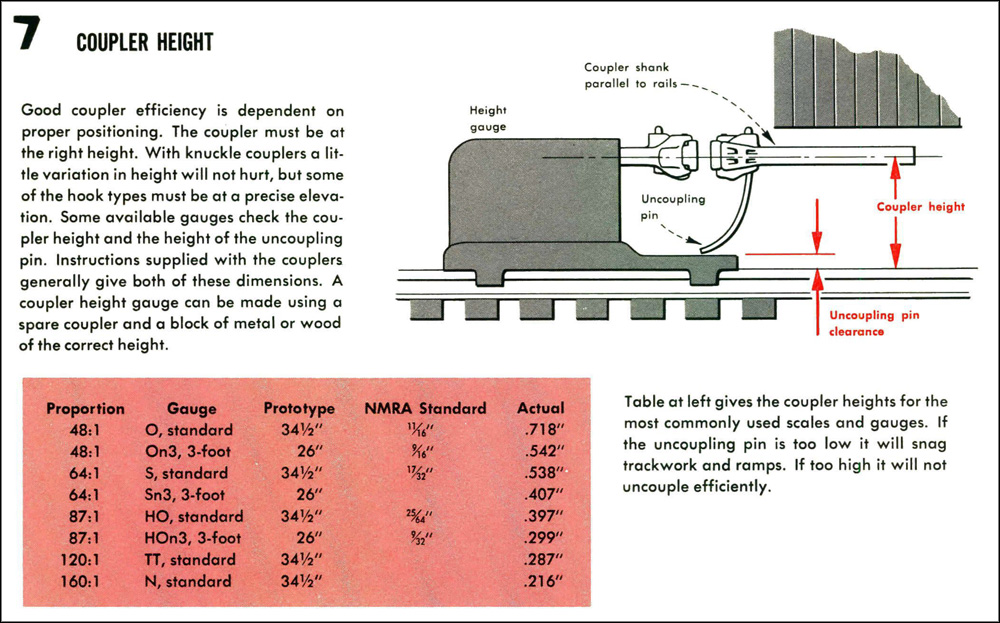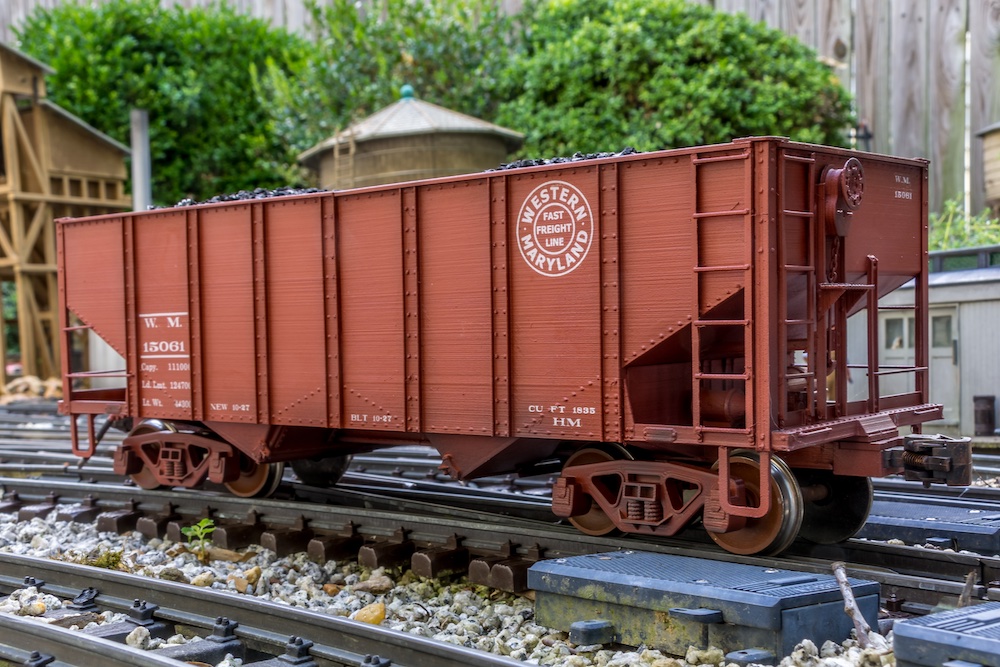
Q: Way, way back in the 20th century, I think in the 1980s (though I’m probably wrong), Model Railroader ran an article about making your own coupler height gauges in the various scales, including TT scale. Can you advise which issue that was? None are available in TT today, and I could use a couple on a test track I’m building. – Carl Sardaro, Milan, N.Y.
A: Hi, Carl. You were only a couple decades off there. I finally found the graphic telling how to make a coupler height gauge in a coupler roundup article written by Gordon Odegard for our [LINK:] December 1967 issue.
Though today you can easily buy coupler height gauges in almost any scale, people who model less popular scales like TT may have to make their own. The table in the graphic above gives you the information you need. The measurement in the “Actual” column is the distance from the railhead to the centerline of the coupler. If you glue a coupler to the top of a block of metal or wood to make a coupler height gauge, remember to take the thickness of the coupler shank itself into account. Use a caliper to measure the shank’s thickness, divide that measurement by 2, and subtract that much from the “Actual” measurement to give you the height of your block.
These dimensions differ just a touch from the ones in the National Model Railroad Association’s Standard S-2. But it has been 56 years since our article appeared, so it’s not surprising that as manufacturing techniques have improved, modeling standards would be adjusted accordingly. The NMRA’s coupler height for TT scale is now 0.281” from railhead to coupler centerline. In HO scale, it’s 0.391”; in O scale, 0.688”. N scale remained the same at 0.216”.
When checking and adjusting your couplers, remember to also check the height of the trip pins. They should clear the railhead by about .010” in order to not snag road crossings, turnout closure rails, diamond crossings, and the like. (That’s the N scale height, but information on TT scale is hard to come by. It should be fine for your scale, though.) Commercial trip pin gauges are available, but you can just get a strip of .010” thick brass to check yours. If you find they need adjustment, check out my “Ask MR” column from December 2021 (also available to subscribers on Trains.com).
Send us your questions
Have a question about modeling, operation, or prototype railroads? Send it to us at AskTrains@Trains.com. Be sure to put “Ask MR” in the subject.













